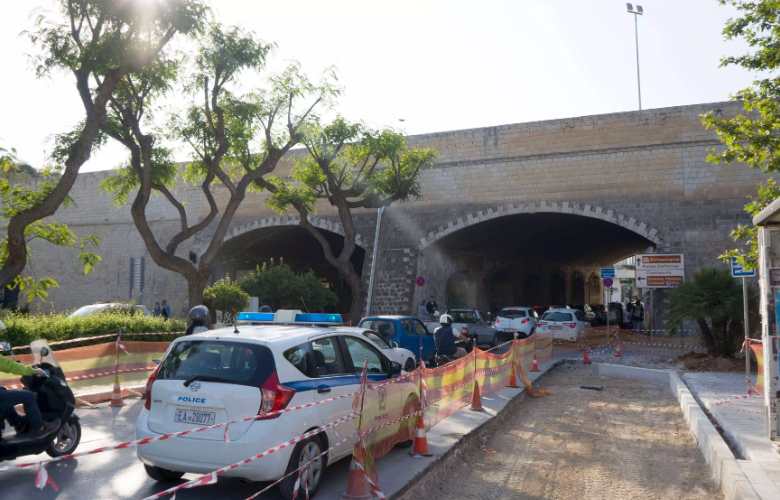Crete, the largest of the Greek islands, beckons with its ancient ruins, sun-drenched beaches, and picturesque villages. As you explore this enchanting destination, understanding the local traffic conditions is crucial for a smooth and enjoyable experience. Navigating the streets of Crete offers a unique blend of coastal drives, mountainous terrain, and vibrant urban areas, each presenting its own set of considerations for drivers.
1. Road Network and Infrastructure:
Crete boasts an old road network, where in the coming years it will be upgraded on a modern highway with tolls. It is about the national road of the island, the Northern Road Axis of Crete, where it is an inconvenience for many drivers. The repeated potholes and the single traffic lane in each direction create traffic in many parts of the road. Overtaking, especially on bends, is a danger for everyone, as many people have been lost. A small part of the national road is two lanes in each direction, with modern specifications, near Heraklion. The island’s provincial network consists of many turns as they cross the mountains.
2. Driving Culture:
Cretan guides are generally diverse. There are the polite drivers – the majority – who let you pass at pedestrian crossings, the hurried drivers who don’t stop at STOP signs, sometimes pass red lights. Many drivers, usually of a young age, drink a lot and then drive at the risk of not only their physical integrity but also that of other drivers. Many do not consider speed limits, ramps, speed cameras and it is common that they do not wear seat belts or helmets.
3. Road signs and language:
Navigating the streets of Crete is made easier with clear and standardized road markings. Important information, such as instructions, speed limits and warnings, are only displayed in Greek. Familiarize yourself with road signs to ensure a smooth journey, especially when traveling in less populated areas.
4. Mountainous Terrain:
The topography of Crete is characterized by mountainous terrain and several roads include steep climbs, descents and sharp turns. Be careful and adjust your speed accordingly, especially when crossing mountain roads. Take advantage of the numerous viewpoints to capture and enjoy the spectacular landscapes unfolding before you.
5. Coastal Roads:
The island’s coastal roads offer some of the most scenic drives, with views of the Aegean Sea stretching out on one side and sheer cliffs alongside the Libyan Sea. While these routes offer a mesmerizing experience, be aware of possible twists, turns and occasional narrow passages. Drive carefully and stop at designated viewing points to capture the beauty of the coastal panoramas.
6. Traffic in urban areas:
Cities such as Heraklion and Chania have increased traffic, especially during peak hours and construction projects. Be prepared for traffic congestion in city centers and use designated parking areas when exploring urban attractions. Many towns in Crete have pedestrian zones, so be aware of restricted areas and respect traffic regulations to ensure the safety of pedestrians and cyclists.
7. Parking Issues:
Parking in urban areas and popular tourist spots can require some planning. Look for designated parking spaces or street parking spaces. In some cases, you may need to park a little further away and walk to your destination. Please note that in smaller villages, you may find traditional Greek-style parking where vehicles can park along the road.
8. Public transport options:
While exploring Crete by car offers flexibility, the island also has a reliable public transport system. Buses connect major cities and towns, providing an alternative for those who prefer not to drive. Consider a combination of driving and public transportation to optimize your travel experience.
9. Driving Etiquette:
Respect for fellow drivers and pedestrians is the key to a positive driving experience in Crete. Be patient, especially in busy areas, and use your horn wisely. Greek drivers often communicate with gestures to indicate their intentions, so familiarize yourself with these non-verbal cues to improve your understanding of local driving etiquette.
10. Vehicle rental:
If you choose to rent a vehicle in Crete, make sure you have a valid driving license and know the local traffic regulations. Check the condition of the vehicle before you pick it up and check the insurance coverage. Rental offices are usually helpful and can provide valuable information about driving on the island.
In conclusion, navigating the streets of Crete is an exciting experience, with due caution always, allowing you to explore the diverse landscapes and rich cultural heritage of the island at your own pace. By understanding the road network, adapting to the local driving culture and respecting traffic regulations, you can embark on a journey that seamlessly combines the thrill of exploration with the tranquility of the Mediterranean lifestyle.


